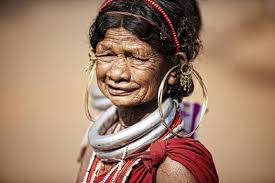What is a Tribe? Describe the characteristics of Tribe
Tribe is a social group that exists in traditional societies, typically characterized by shared kinship, culture, language, and territory. Tribal groups often maintain distinct customs, governance systems, and ways of life, separate from urbanized or industrialized societies. Although the concept of a tribe has evolved over time, and many societies have shifted away from tribal structures, tribes remain important in many regions around the world.
Here we will describe the characteristics of Tribe.
Key Characteristics of a Tribe:
-
Kinship and Social Bonds: – Tribes are usually made up of extended families or clans. Kinship ties are often a primary basis for social organization, with members related by blood or marriage. The tribal members typically structure social relationships according to familial lines.
-
Common Culture and Traditions: – Members of a tribe share a common culture, including customs, rituals, religious practices, festivals, art, and moral codes. These cultural elements help bind the tribe together and distinguish it from other groups.
-
Language: – Tribes often have their own distinct languages or dialects. Language serves as a tool for communication within the group and acts as a cultural identifier, preserving oral traditions, histories, and knowledge.
-
Territoriality: –Tribes typically claim a specific territory or homeland as sacred or essential for their identity and survival. Their way of life is closely linked to tribal lands, especially when these lands provide natural resources such as water, forests, or wildlife.
-
Informal Governance and Leadership: – Many tribes are led by chiefs, elders, or councils who make decisions for the group. Governance structures within tribes are often informal, based on consensus, age, wisdom, or social status, rather than formalized political institutions. Tradition and community respect are typically the foundations of leadership.
-
Subsistence Economy: – Traditionally, tribes rely on subsistence economies such as hunting, gathering, farming, or herding. The community often shares resources and carries out economic activities to meet its immediate needs.
-
Solidarity and Communal Living: – Tribal members often emphasize collective responsibility, sharing, and cooperation. The group values its welfare over individualism, and it may make decisions through consultation with community members
-
Spiritual and Animistic Beliefs: – Many tribes practice animism or have a deep spiritual connection to nature and their environment. Rituals and ceremonies may revolve around natural cycles, animals, or ancestors, often reflecting the tribe’s relationship with the world around them.
-
Resistance to Outside Influence: – Historically, tribes have resisted external influences, whether from colonization, modernization, or state-level politics. This resistance often stems from a desire to preserve their autonomy, land, and cultural identity.
-
Oral Tradition: -In many tribes, members pass down history, stories, laws, and knowledge orally from one generation to the next. Oral tradition is a fundamental part of preserving their heritage.


